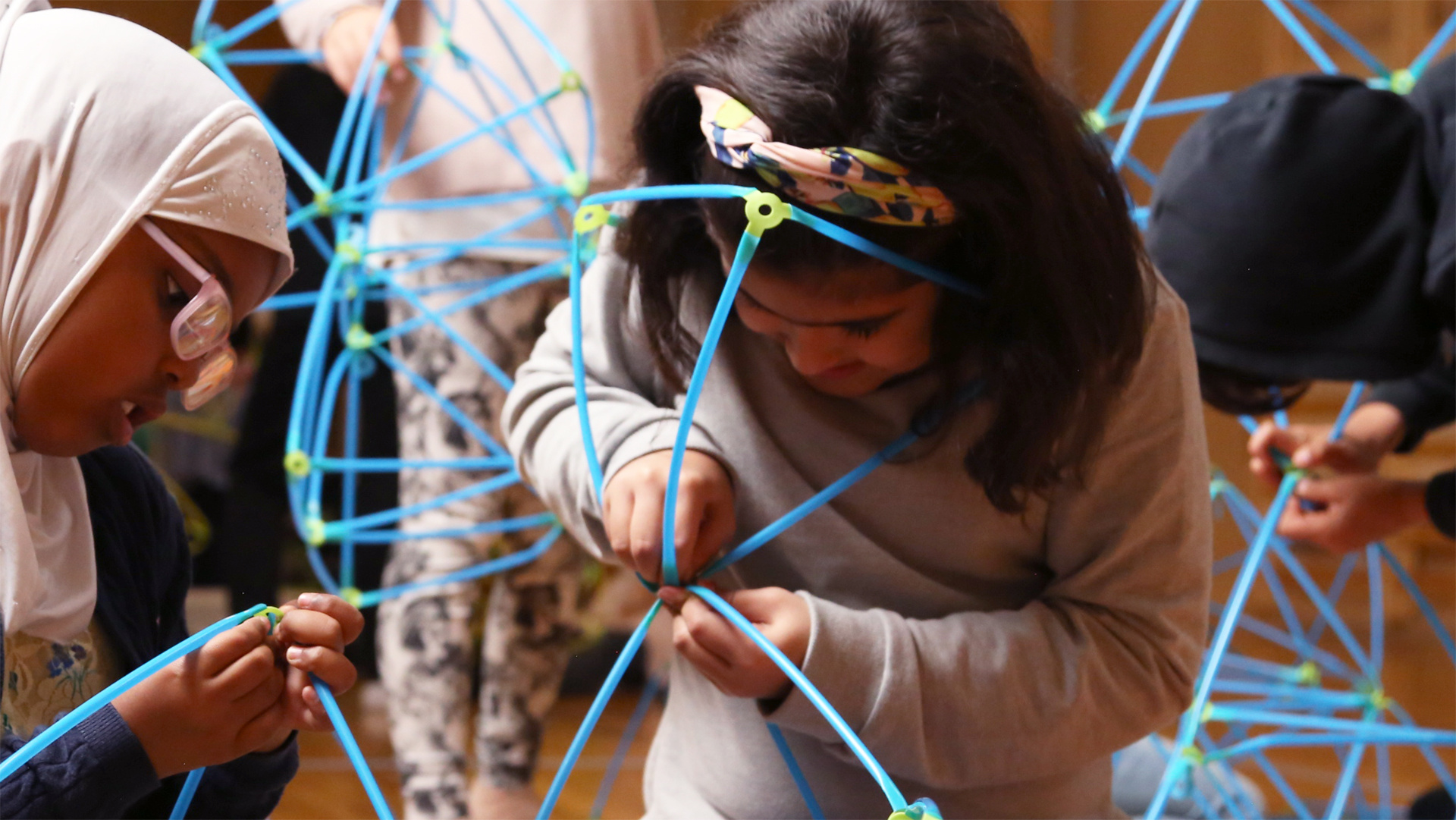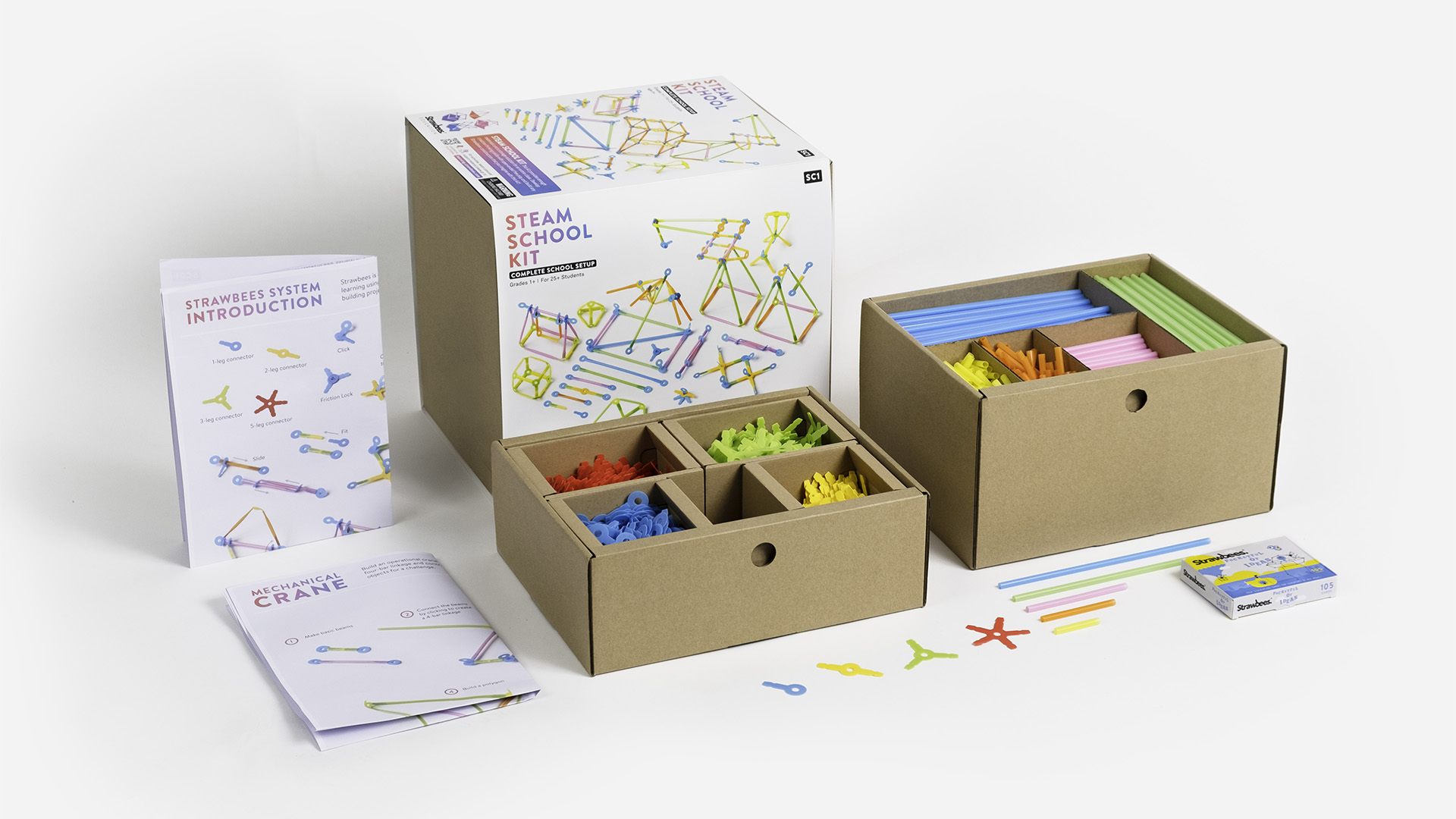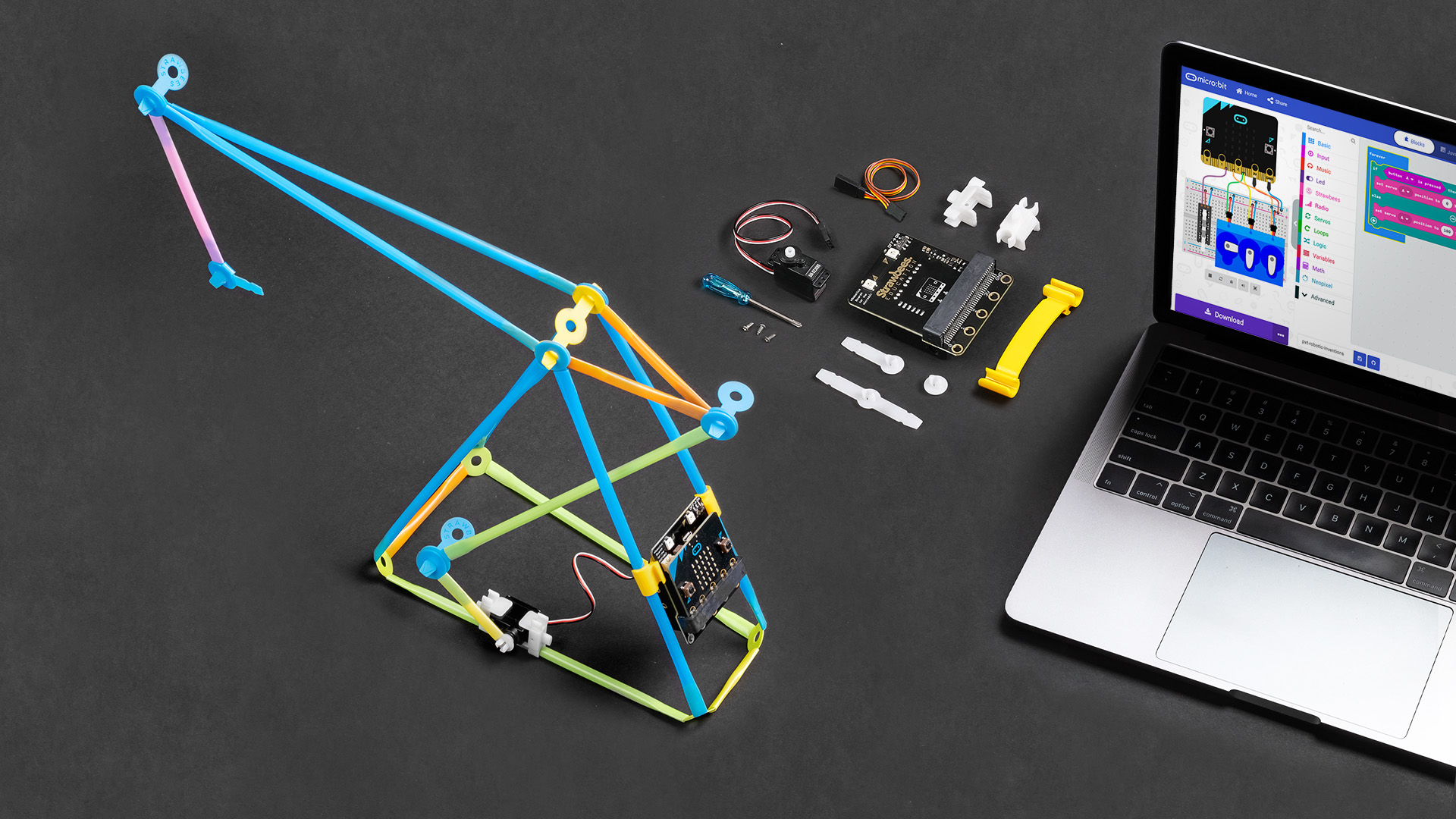40 (+1 bonus) Exciting STEAM Activities for Primary School Learners
In this article, we’re sharing a variety of engaging activities that blend STEAM with creativity and hands-on learning. These activities are perfect to share with your learners to do in school or at home, providing multiple opportunities to explore nature, develop new skills, and learn through practical experiences, all crowdsourced from parents by dailySTEM.
If you haven't already, download the free pdf featuring all 40 (+1 bonus) activities.
1. Find Something in Your Garden from Every Rainbow Colour
Encourage learners to explore the garden and find items representing each colour of the rainbow (red, orange, yellow, green, blue, indigo, violet). This activity enhances observation skills and helps learners to appreciate the diversity of nature. They can collect red flowers, orange leaves, yellow petals, green grass, blue pebbles, indigo berries, and violet blossoms, for example, and then arrange them in a colourful display.
2. Track & Graph Your Family’s Daily Rubbish Output
Learners track the amount of rubbish their family produces each day and create a graph to visualise the data. This activity teaches data collection, environmental awareness, and graphing skills. Further discussions can lead to ways to reduce waste and recycle more to make a household more eco-friendly.
3. Plant Seeds in a Clear Water Bottle to Watch the Roots Grow
Plant seeds in a clear water bottle so learners can observe root growth. This is a great way to teach plant biology and the importance of roots. Over time, they’ll see how roots anchor the plant and absorb water and nutrients.
4. Put Seeds on a Wet Paper Towel in a Clear Food Bag & Hang them in a Window to Sprout
Place seeds on a wet paper towel inside a clear food bag and hang it in a window. Watching the seeds sprout helps learners understand the germination process. It’s fascinating to see how tiny seeds transform into seedlings with just water, light, and a bit of care.
5. Put Leaves Under a Sheet of Paper & Rub Over Their Shape with a Crayon
Place leaves under a sheet of paper and rub over them with a crayon to create leaf prints. This activity combines art with the study of leaf shapes and textures. It’s a fun way to learn about different types of leaves and the patterns of their veins.
6. Paint or Draw a Picture of a Plant, Build a Frame & Hang it on the Wall
Learners can express their abstract side by painting or drawing a plant, building a frame, and hanging their artwork for all to view. This encourages creativity and pride in their work. It also allows them to observe plants closely and capture their details in art.
7. Make Hidden Messages Using Lemon Juice
Write messages with lemon juice on paper. When the paper is heated, the message appears, teaching learners about invisible ink and basic chemistry. It’s a magical way to learn about acid-base reactions and the properties of organic compounds.
8. Go for a Walk and Use an App to Identify Plants
Use plant identification apps during walks to learn about local flora. This enhances botanical knowledge and tech skills. Apps like PlantSnap or iNaturalist can help learners discover the names and characteristics of plants they encounter.
9. Record a Bug, Butterfly, or Spider in Slow Motion
Capture slow-motion videos of insects to observe their movements in detail. This teaches patience and keen observation skills. It’s amazing to see the intricate details and movements of these small creatures up close.
10. Make Constellations on the Wall by Poking Holes in a Paper Cup & Shining a Torch Through It
Create constellations by poking holes in a paper cup or piece of paper and shining a torch through it. This activity introduces learners to astronomy in a fun way. They can learn about different constellations and how they appear in the night sky.
11. Learn to Identify Trees by Their Leaves or Bark
Study tree leaves and bark to identify different species. This enhances botanical knowledge and observational skills. Learners can make a field guide with drawings or photos of the trees they identify. Check out these apps (TreeID from Woodland Trust), or use books to enhance learning.
12. Determine How Much Waste There Is from Cooking a Meal
Measure the waste produced from cooking a meal and discuss ways to reduce it. This promotes environmental awareness and sustainability. Learners can help find creative ways to use leftovers and reduce food waste.
13. Invent Your Own Musical Instrument Using Recyclable Items
Create musical instruments from recyclable materials through ingenuity and creativity. This activity encourages creativity and sustainability. They can make drums from cans, shakers from bottles filled with beans, or guitars from boxes and rubber bands. Who can make the most noise!!!
14. Measure & Graph Temperature or Rain Totals
Record and graph daily temperatures or rain totals. This teaches learners about weather patterns, data visualisation and maths. They can learn how to read thermometers and rain gauges, and then plot their findings on a graph.
15. Make a Time Capsule to Open in 10 Years
Create a time capsule with personal items and bury it to open in 10 years. This activity teaches planning and the concept of time. Learners can include letters to their future selves, drawings, and small treasures as well as deciding where it will be stored and untouched for the next decade.
16. Try Sprouting a Carrot Top, Dried Bean, or Fruit Seed
Sprout a carrot top, dried bean, or fruit seed to learn about plant growth. This enhances the understanding of botany and the life cycle of plants. Learners can observe how these plants grow roots and shoots over time.
17. Learn Bird Calls
Study and learn to identify local bird calls. This activity improves auditory skills and birdwatching knowledge. Apps and online resources can help learners recognise different bird songs and calls such as Merlin Bird ID or Warblr.
18. Observe the Moon Each Night & Take Pictures to Make a Time-Lapse Video
Photograph the moon nightly to create a time-lapse video. This introduces learners to lunar phases and basic astrophotography. They’ll learn about the moon’s changing appearance and the science behind its phases.
19. Make a Bird Feeder
Build a bird feeder and observe the birds that visit. This promotes interest in local wildlife and provides hands-on crafting experience. They can use recycled materials like plastic bottles or milk cartons to create their feeders.
20. Count How Many & What Type of Birds Come to Your Bird Feeder
Keep a log of the types and numbers of birds visiting the feeder. This teaches data collection and bird identification. Learners can use bird guides or apps to identify different species such as Merlin Bird ID.
21. Learn to Weave Using Grass or Strips of Birch Bark
Weave using natural materials like grass or birch bark. This activity enhances fine motor skills and introduces traditional crafting techniques. Learners can create small mats, baskets, or decorative items. Take this one step further and start discussing new manufacturing techniques that have replaced these traditional methods.
22. Make a Sundial
Construct a sundial to learn about the movement of the sun and tell the time naturally. This combines science with crafting. Learners will get to grips with how shadows move with the sun and how ancient civilisations told time.
23. Invent a Board Game Using Bottle Caps or Other Small Recycled Items as Pieces
Create a board game using recycled items. This encourages creativity, strategic thinking, and sustainability. Learners can design the game board, rules, and pieces from materials like bottle caps, cardboard, and paper. This can also be done as a collective with everyone gathering items for the game. Remember to have some fun with it and once developed… play!
24. Buy Something at a Car Boot Sale & Take it Apart
Purchase an item at a car boot sale and disassemble it to understand how it works. This teaches curiosity, engineering, and problem-solving skills, as well as learning about the components and mechanisms inside everyday objects.
25. Fix a Broken Toy (Instead of Throwing It Away)
Repair a broken toy to promote sustainability and problem-solving. This activity teaches resourcefulness and basic repair skills. Learners can start to use simple tools and think creatively to fix their toys.
26. Plant Some Seeds & Record Their Growth
Plant seeds and document their growth over time. This activity teaches responsibility and scientific observation and analysis. Learners can keep a journal with drawings, photos, and notes about their plants’ progress and reflect on their findings.
27. Learn to Fix Something on Your Bike
Learn basic mechanical repair skills to promote independence and mechanical understanding. This teaches practical skills and confidence. Learners can learn to fix flat tyres, adjust brakes, and perform basic maintenance and if a bike isn’t available there are plenty of other mechanical objects that make the perfect substitute such as a Go-Kart, Scooter or a remote control vehicle.
28. Create a Stop-Motion Video Using Items from Nature
Use natural items to create a stop-motion video. This combines art, technology, and storytelling. Learners can animate scenes with leaves, rocks, and twigs, and then compile the frames into a video or use apps such as Stop Motion Studio or life lapse.
29. Use a Magnifying Glass to Search the Ground for Bugs
Explore the ground with a magnifying glass to find and study bugs. This enhances observation skills and interest in entomology. Learners can observe the details and behaviours of different insects up close.
30. Interview a Senior Citizen About How Technology Has Changed Their World
Interview an older person about technological changes they've experienced. This fosters intergenerational learning and historical understanding. Learners can write a report or create a presentation based on their interview or even help the interviewee better understand the latest technology.
31. Create Something Using Instructables.com
Follow instructions from Instructables.com by AutoDesk to build a project. This teaches following instructions, creativity, and DIY skills. Learners can find projects that interest them personally, from simple crafts to more complex engineering tasks.
32. Weed a Garden & Identify the Weeds
Weed a garden and learn to identify different types of weeds. This teaches botanical knowledge and the importance of garden maintenance. Learners get to understand which plants are beneficial and which are invasive - as well as helping to keep the garden tidy.
33. Design & Build Boats for LEGO® Figures & Test Them
Create and test boats for LEGO® figures. This activity combines engineering, creativity, and scientific experimentation. Learners can compete with each other and test different designs to see which ones float best and can carry the most weight.
34. Learn to Carve or Whittle
Learn basic carving or whittling skills. This teaches fine motor skills, patience, and craftsmanship as well as traditional ways of working with different materials. Learners can start with simple projects like carving a stick or making a small figurine.
35. Make a Magnifying Glass by Putting Water in a Plastic Bag
Create a magnifying glass using water in a plastic bag. This introduces principles of light refraction and optics. Learners can experiment with different amounts of water and use their homemade magnifying glass to examine small objects.
36. Make a Guar Gum-Based Soap Bubble Solution and Blow HUGE Bubbles
Create a soap bubble solution with guar gum to blow large bubbles. This activity combines chemistry with fun. Learners can experiment with different mixtures to see which one makes the biggest bubbles. If guar gum isn’t available a good substitute is bubble bath or washing-up liquid.
37. Make a Balloon Barometer
Construct a barometer using a balloon, a glass jar, sellotape and a pen or pencil to measure atmospheric pressure. This teaches weather science and engineering. Learners will start to understand how changes in air pressure can predict weather patterns.
38. Make a Cartesian Diver Using a Strawbee Straw (or Similar) and a paperclip in a Bottle with Water
Create a Cartesian diver to learn about buoyancy and pressure. This activity combines physics with hands-on experimentation. Learners will soon get to grips with how squeezing the bottle makes the diver sink and releasing it makes the diver float. Further teachings can be done through researching the origins of this experiment.
39. Bend a Stream of Water with a Comb That You Have Run Through Your Hair
Use static electricity to bend a stream of water with a comb. This teaches basic principles of physics and electricity. Learners get to charge particles with their hair and see how these invisible elements interact and cause a stream of water to bend.
40. Make a Boat Out of Wood or Bark and Put It in a Stream of Water.
Build a boat from natural materials and race them in a stream. This encourages engineering skills and competition. Learners can test different designs to see which boat travels fastest or stays afloat longest.
+1 bonus. Make a Cross-Shaped Indoor Boomerang Out of a Cereal Box
Create a boomerang from a cereal box (or a shoe box) and test it indoors. This activity teaches aerodynamics and recycling. Learners will be encouraged to investigate the principles of flight and how to make a boomerang return to them. A competitive element can be added to see whose boomerang flies in the most circular pattern and comes back to them the most effectively.
These activities are designed to engage learners in hands-on learning, fostering a love for STEAM subjects while developing a wide range of skills in school or at home. Whether you incorporate these activities into your classroom or playground or suggest them to parents for home learning, each activity provides a valuable educational experience that is both fun and informative.
Encourage young learners to explore, create, and discover with these exciting STEAM activities.
You May Also Like
These Related Stories

The Benefits of Learner-Led Hands-On Learning

Unboxing Strawbees STEAM School Kit (for up to 30 Learners)



